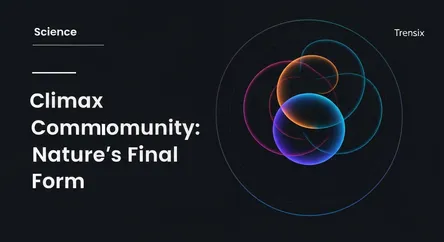Science
Climax Community: Nature's Final Form

Discover climax communities, the final, stable stage of ecological succession where an ecosystem reaches equilibrium with its environment.
What is it?
A climax community is the final, stable stage of ecological succession, where a biological community of plants, animals, and fungi has reached a steady state with its environment. This ecosystem is considered mature and self-perpetuating, remaining relatively unchanged unless disturbed by major events like fire or human activity. Think of an old-growth forest with towering trees, a complex food web, and high biodiversity; this is a classic example. It represents the culmination of a long process that often begins with hardy pioneer species colonizing a barren landscape, gradually paving the way for more complex life forms until this equilibrium is achieved.
Why is it trending?
The concept is gaining attention due to growing concerns about climate change, habitat loss, and conservation. As we witness ecosystems being disrupted, understanding the goal of ecological restoration—often a climax community—becomes crucial. Discussions around rewilding projects and large-scale reforestation efforts frequently reference the idea of helping a disturbed area progress toward its stable, climax state. It provides a benchmark for measuring the success of environmental recovery and highlights the long-term consequences of deforestation and pollution on an ecosystem's natural development.
How does it affect people?
Climax communities provide vital ecosystem services that directly benefit humanity. These stable environments are highly effective at carbon sequestration, purifying air and water, preventing soil erosion, and regulating local climates. Their rich biodiversity supports pollination, pest control, and provides a genetic library for medicine and agriculture. The health and stability of these ecosystems are directly linked to our own well-being, resource availability, and resilience against environmental changes. Protecting them is not just about saving nature; it's about securing the natural systems that sustain human life.